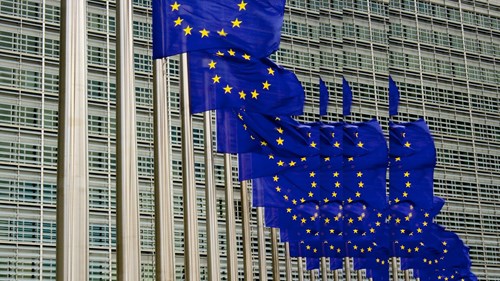Civil drones from a data protection and regulatory perspective
Unmanned aircraft systems, commonly known as “drones”, have for some time now been the subject of topical discussion. Despite certain regulatory concerns, companies such as Amazon and Google recently announced that they soon want to start delivering parcels with drones. In Germany, DHL is also currently testing drones for the delivery of parcels and is using them to supply the island of Juist off the German coast with pharmaceuticals.
Definition and current developments
“Drone” is a synonym for the term UAV or unmanned aerial vehicle. These do not have an on-board pilot, but are either autonomous or are remotely piloted by ground staff (remotely piloted aircraft systems- RPAS).
Although drones were originally intended mainly for military applications, their civil deployment is increasing in significance. Drones equipped with appropriate sensors can, for example, be used to identify the presence of chemicals, radioactive materials or weapons or to make the search for missing people easier.
The interest of private users in these aircraft systems which are still very new (at least for the mass market) is also growing. There are special drones equipped with HD video cameras which are able to take spectacular aerial pictures.
What is certain is that drones will become increasingly important in our everyday lives. Sales of up to 160,000 drones by 2020 are expected in the USA alone.
Key legal issues
Despite all the possibilities which the operation of drones offers, it should not be ignored that specifically their civil deployment is associated with legal implications. The current focus is on data protection law and regulatory aspects.
1. Data protection law requirements on the civil use of drones
Data protection issues relating to the civil use of drones can for example result if they are used to capture or record images.
Section 6b of the German Federal Data Protection Act (Bundesdatenschutzgesetz – BDSG) contains a specific regulation which applies to the surveillance of publicly accessible areas using “optical electronic devices” and therefore also covers drones which have been fitted with a video camera. Non-public bodies (i.e. for example in the private sector) are only permitted to carry out such surveillance activities in order to keep out trespassers or protect other legitimate interests for specifically established purposes, and they may only do so provided these interests are not outweighed by the legitimate interests of the persons concerned (i.e. the people being filmed). The situation therefore has to be assessed taking all circumstances of the individual case into consideration, such as the significance of the legitimate interests, the level of risk, the duration and intensity of the surveillance, to what extent the persons filmed can be identified and protective measures to protect “innocent bystanders”.
The use of video drones in publicly accessible sales or event areas to protect property from theft or damage is certainly conceivable. However, since the intervention of mobile aerial surveillance is typically more intensive than that of permanently installed cameras, it is likely that particularly comprehensive measures to protect the rights of the people subject to surveillance will be necessary.
Section 6b of the German Federal Data Protection Act applies irrespective of whether the images are recorded or not (even if the question of recording can be significant for justifying the surveillance). Unlike in the rest of the German Federal Data Protection Act, it is not relevant here whether the images or recordings are personal or not, i.e. the regulation is also applicable if the persons recorded cannot be identified.
The German Federal Data Protection Act does not, however, apply if personal data is collected, processed and used “exclusively for personal or family activities” (Section 1 II No. 3 of the German Federal Data Protection Act). This statutory exception excludes the handling of the personal data of private persons, as long as this takes place for personal, non-commercial purposes. Whilr it has not yet been conclusively clarified with respect to the scope of Section 6b of the German Federal Data Protection Act whether this exemption also applies to video surveillance, the authorities appear to be tending in this direction. If a private person goes on a “sightseeing flight”, say through a city centre with a video drone, this is unlikely to fall under the data protection regulations.
The limits placed on private activities are, however, likely to be exceeded if the surveillance of public spaces is deliberate, not least in view of the current judgement handed down by the European Court of Justice on 11 December 2014 (Case C-212/13). Anyone who buys a drone for the surveillance of their house and property must ensure that only this and not the adjacent public street is monitored.
Since Section 6b of the German Federal Data Protection Act only applies to the surveillance of “public spaces”, the regulation does not apply anyway if spaces which are not accessible to the public are monitored with drones. This includes a “trip” with a video drone to a neighbour’s garden. It is, however, of significance in precisely such a case that the right to data protection is simply a special form of the individual’s right to privacy. It may therefore be possible to take civil-law action against such “trips” based on a breach of privacy.
In view of the issues looked at above and the ever increasing possibilities for the deployment of drones, some data protection specialists are demanding comprehensive regulations to govern their use.
2. Aviation law requirements
The issue of civil drones is also increasing in significance from a regulatory, aviation law point of view. An increasing number of applications and the rapid development of the market have prompted the gradual integration of these aerial vehicles into existing air traffic.
The legislator reacted to this with the 14th Amendment to the German Aviation Act (14. Gesetz zur Änderung des Luftverkehrsgesetzes – LuftVG) and makes it clear in Section 1 II 3 of this act that unmanned aerial vehicles including their control stations which are not operated for sport or recreational purposes are now also considered aircraft and therefore fall under the scope of the German Aviation Act and the German Aviation Regulation (Luftverkehrs-Ordnung – LuftVO).
According to the requirements of the German Aviation Regulation, the deployment of drones for commercial purposes requires the permission of the Regional Aviation Authority. In the case of drones with a total mass of less the five kilograms a general two-year permit is issued; for drones with a total mass of between five and twenty-five kilograms only an individual permit is issued. The operation of heavy drones and the use of drones outside the controller’s range of vision or at an altitude exceeding 100 metres are currently only permissible by way of exception for testing and experimental purposes.
The operation of drones is prohibited in certain areas, such as above crowds, military facilities and power stations or in the vicinity of airports. The permits also contain numerous additional provisions to ensure air traffic safety and public safety and order, such as with respect to sufficient safety clearance, emergency procedures if radio contact is lost or disrupted or to secure the launch and landing site.
Well
informed
Subscribe to our newsletter now to stay up to date on the latest developments.
Subscribe now






